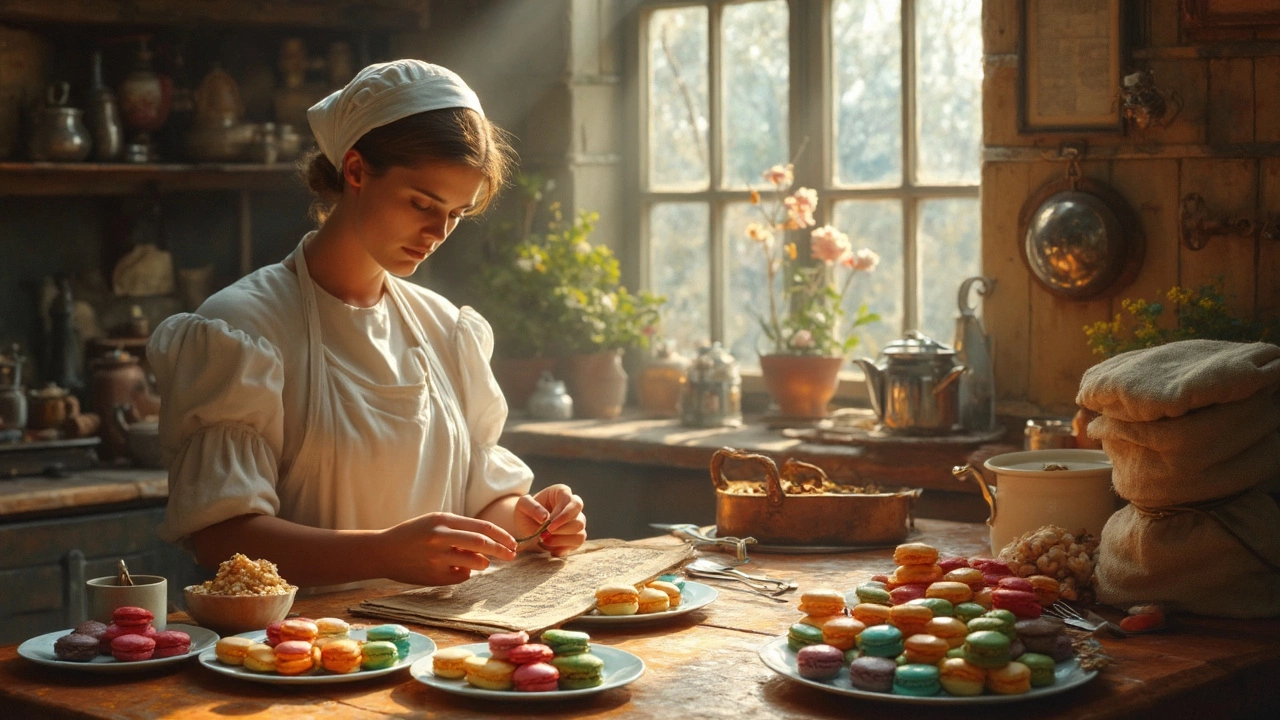
People think the macaron is classic French, but that’s only half the story. Yes, you’ll spot these colorful, delicate rounds in every Paris pastry shop, but their roots stretch way further back, with a lot of confusion about who actually invented them.
If you’ve ever wondered why people get so passionate about these little cookies, or why there are so many wild stories about their invention, you’re in the right place. Knowing where macarons really come from can help you appreciate not just the dessert, but all the little touches that turn simple ingredients into something special.
Ever noticed how no two bakeries’ macarons are quite the same? It’s not just random luck or secret recipes. The story behind the macaron is stuffed with twists, cross-country journeys, and clever bakers making the most of what they had. That means there’s a lot more to this treat than sugar and almond flour.
- The Origins of the Macaron
- Separating Myth from Fact
- Macarons in France: A Culinary Evolution
- What Makes a Macaron Unique?
- Famous Macaron Makers and the Trend
- Tips for Enjoying and Storing Macarons
The Origins of the Macaron
This might come as a shock, but the macaron history didn’t even start in France. Most food historians agree that the first version of this treat showed up in Italy way back in the 1500s. The word "macaron" comes from the Italian “maccarone” or “maccherone,” meaning a kind of fine dough. It was probably almond-based cookies that Italian monks were already snacking on years before France fell in love with them.
So how did these Italian cookies turn into the Parisian icon we know? Fans love to talk about Catherine de’ Medici, an Italian noblewoman who married France’s King Henry II in 1533. She’s often credited with bringing her chefs—and their recipes for macarons—to France. There’s even a legend that the French court was instantly obsessed, but there aren’t any real documents that prove she’s the true “macaron mom.” Still, most stories about who invented macarons link back to this Italian-to-French food exchange.
The French really ran with it, but early French macarons looked totally different from today’s. Back in the beginning, they were just single, simple almond cookies—no fancy fillings or pastel colors. You wouldn’t even spot two shells sandwiched together until much later.
Here’s a quick timeline to clear things up—and yes, it helps bust those bakery myths:
- 1533: Catherine de’ Medici brings her Italian chefs (and macarons) to France.
- Late 1700s: French monasteries and convents are making simple almond macarons—their “secret” recipe spreads across the country.
- 1930s: The Parisian double-decker macaron, with ganache or jam filling, takes over pastry shops. Ladurée is the bakery most people credit for popularizing this version.
If you line up different countries’ almond cookies—like Italy’s amaretti—alongside French macarons, you’ll see the connections. But only in France did this cookie get its signature meringue-based texture and bright looks.
Separating Myth from Fact
The macaron history gets muddier the more you read. Tons of folks say Catherine de’ Medici brought the first version over from Italy in the 1500s when she married into the French royal family. Sounds cool, right? But there’s zero paperwork or recipes to prove it. Turns out, stories about her pastry chefs inventing the macaron are basically hearsay.
Setting the record straight, historians can trace macaron-like cookies to Venetian monasteries as early as the 8th century. These early cookies were just almond flour, sugar, and egg whites—simple and gluten-free even back then! Nothing like the double-decker, colorful sweets we call macarons today, but definitely the same family.
By the late 1700s, French nuns (the so-called ‘Macaron Sisters’ in Nancy, France) made these cookies popular in France. Still, their macarons were single-layered and looked more like plain biscuits than the ones stacked with filling you see today. The sandwich style didn’t pop up until the early 20th century in Paris. Credit for this upgrade usually goes to Pierre Desfontaines of the famous Ladurée bakery, who had the idea to stick two cookies together with ganache.
- The French desserts we now think of as macarons are actually a modern twist.
- No real proof backs those romantic Italian origin stories, as much as the French like to borrow them.
- The cookies evolved in phases: monastery treat, then a French favorite, then the eye-catching shop star.
What’s wild? Today, about 6 million macarons sell every year at Ladurée in Paris alone. So even though nobody can totally agree who invented the macaron, one thing’s clear—it’s become a worldwide hit thanks to a long process of tweaking, not a single genius move.
Macarons in France: A Culinary Evolution
The macaron history in France kicks off seriously in the 1500s. Catherine de’ Medici’s Italian chefs brought almond paste cookies to France when she married Henry II. These early macarons were just single, crunchy cookies with no filling—pretty basic compared to what you see in modern bakeries.
Fast forward to the 19th century, and a French bakery in Paris, Ladurée, takes the macaron and totally reinvents it. Here’s where the magic happens: double the cookie, add a layer of ganache or jam, and suddenly you get the iconic sandwich look. If you see brightly colored macarons lined up today, you’re looking at Ladurée’s influence.
As these treats got popular, different regions in France spun off their own versions. Nancy’s “Les Soeurs Macarons” became famous for their simple, rustic take. Meanwhile, Paris set the trends for color and flavor. This regional rivalry helped keep ideas fresh—think chocolate, pistachio, even rosewater showing up in the macaron lineup.
By the 20th century, the French desserts scene embraced macarons big time. Bakeries started experimenting with new fillings and colors, turning them into status symbols almost as much as pastries. And let’s be real—who doesn’t love something that looks as good as it tastes?
If you want proof of their wild popularity, just look at the numbers. A 2023 survey reported the average Parisian bakery sells at least 150 macarons per day. Ladurée alone claims to bake around 12,000 daily all year round. That’s a lot of cookies—and a sign that this culinary evolution isn’t slowing down.
| Year | Macaron Milestone |
|---|---|
| 1500s | Catherine de’ Medici brings Italian cookie to France |
| 1800s | Ladurée creates the modern double-decker macaron |
| 1900s | Colorful flavors hit Paris and go global |
So, France took a simple cookie and turned it into a global superstar. Next time you pick up a box of macarons, you’re enjoying centuries of dessert evolution—French style.
What Makes a Macaron Unique?
Let’s be real—a macaron turns heads for a reason. These treats aren’t like regular cookies. Each one packs a delicate, crispy shell with a soft, chewy middle, all held together by a rich filling. Getting that mix right is actually tougher than it looks. The classic macaron formula uses just egg whites, almond flour, and powdered sugar. But how those three ingredients are handled makes all the difference.
Compared to other cookies or meringues, a true macaron forms what bakers call “feet”—that ruffled edge at the base. This is a big deal. If you ever see a fancy-colored, flat macaron without its feet, you’re not looking at the real deal. Professional bakers obsess over perfecting the texture, because even tiny slips in timing or humidity will ruin the batch.
Another standout thing: French macarons (the kind you see everywhere now) aren’t actually baked with flavor inside the shell. Instead, the taste punch comes from the filling—everything from praline to salted caramel or pistachio cream. The shell itself is mainly there for the texture and a hint of sweetness. So, bite into a real macaron and you’ll get a mix of airy crunch, almond chew, and cool bursts from the filling.
- Size matters: A classic macaron should be around 3-4 centimeters across. Jumbo ones might look cool but don’t always deliver the perfect bite.
- Color isn’t just for looks: Real bakers use natural tints or carefully chosen food coloring. Super-bright shades (think neon blue) usually mean shortcuts or artificial flavors.
- Freshness is key: The best macarons have shells that stay crisp but melt in your mouth within a day or two of baking. That’s why shops often bake fresh daily and only sell the flavors they can move quickly.
Curious how a macaron stacks up next to other popular cookies? Here’s a quick stats table to compare:
| Cookie | Main Ingredients | Texture | Average Calories |
|---|---|---|---|
| Macaron | Almond Flour, Egg White, Sugar | Crispy shell, chewy center | 70-110 |
| Macaroon | Coconut, Egg White, Sugar | Soft, dense, coconutty | 90-130 |
| Meringue | Egg White, Sugar | Very light, crisp | 25-40 |
So next time you pick up a macaron, pay attention to its shell, feet, and flavor. These aren't just cookies—they’re a test of precision, patience, and a little bit of French know-how.
Famous Macaron Makers and the Trend
If you walk into any top pastry shop in Paris, there's a good chance you'll hear the names Pierre Hermé and Ladurée. These places did more than just sell macarons—they turned them into an international craze. Macaron history would look really different without these heavy hitters pushing the treat into the spotlight.
Ladurée is the one most people talk about first. This classic Parisian bakery started selling the double-decker macaron we all know way back in the 1930s. Rumor has it, Pierre Desfontaines, a relative of the Ladurée founder, came up with the idea to sandwich two cookies together with a soft filling. Before that, macarons were just single almond cookies, nothing fancy. Now, people flock to Ladurée shops all around the world for that classic pastel box.
Then there’s Pierre Hermé, often called “The Picasso of Pastry.” He got his start at Fauchon and later launched his own shops. Hermé is the guy who made French desserts cool by shaking up flavors—think olive oil and vanilla or passionfruit with milk chocolate. He didn’t just stick with the traditional raspberry and pistachio. Hermé showed everyone that macarons can be as creative as a top-tier fashion show. To this day, macaron lovers debate which shop does it best.
If you really want to geek out over the trend, here’s a quick look at just how big these two names have made macarons:
| Brand | Founded | # of Shops Worldwide (2024) |
|---|---|---|
| Ladurée | 1862 | Over 90 |
| Pierre Hermé | 1998 | More than 40 |
The craze isn’t stuck in France. Macaron shops are everywhere—in Tokyo, London, New York, even Dubai. Instagram is full of those colorful boxes and fancy flavors that didn’t even exist 20 years ago. Brands jump in with limited editions all the time. Some shops even sell out quick and have lines out the door.
The trend isn’t just about buying, though; it’s changed how people make macarons at home. Fancy kitchen gadgets, endless YouTube tutorials, and food blogs have made baking your own possible (and actually pretty fun). So when you see that neat row of macarons, remember: Ladurée and Hermé turned this cookie into a global icon, and the macaron trend doesn’t seem to be slowing down anytime soon.
Tips for Enjoying and Storing Macarons
So, you finally got your hands on a box of real macarons. Now the trick is making the most of them before they go stale or limp. These little treats are known for their crisp shells and chewy center, and it’s honestly a shame to waste even one.
If you want the best flavor and texture, eat your French desserts at room temperature. Cold macarons from the fridge taste dull and the texture just isn’t right. Let them sit out for 10–15 minutes after you take them out of the fridge and you’ll notice the difference immediately.
Wondering how long they last? Macarons usually keep their best quality in the fridge for up to 5 days. After that, the shells start to lose their snap. If you bought more macarons than you can handle (hey, it happens), grab an airtight container. Here’s a quick list to make sure you’re doing it right:
- Store macarons in a single layer, not piled up, because they’re fragile.
- Keep them in an airtight container to stop them from getting soggy or picking up refrigerator smells.
- If you won’t eat them within 5 days, stash them in the freezer. They last about a month there without losing much flavor or structure.
- To thaw frozen macarons, pop them in the fridge overnight, then let them come to room temperature before you dive in.
One weird fact: humidity is the enemy. If you live someplace sticky, even a few hours at room temp can ruin that perfect chewy-meets-crisp bite macaron history is famous for.
| Storage Method | Shelf Life | Tips |
|---|---|---|
| Room Temperature | 1 Day | Only if eating right away |
| Refrigerator | 3–5 Days | Use airtight box |
| Freezer | Up to 1 Month | Thaw gently, don’t refreeze |
And if you’re sharing macaron facts with friends, remember: serve them plain! Skip the whipped cream or sauces. You want folks tasting that almond, not burying it under sweet goo.


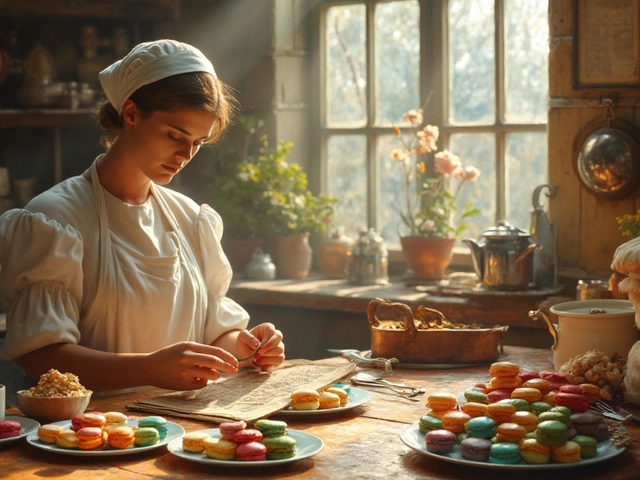
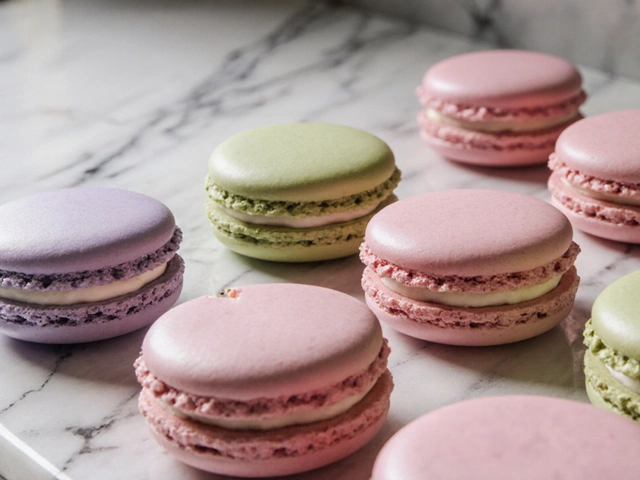
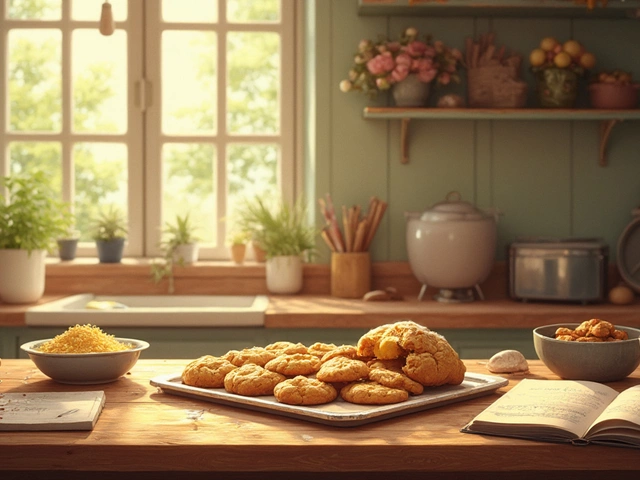
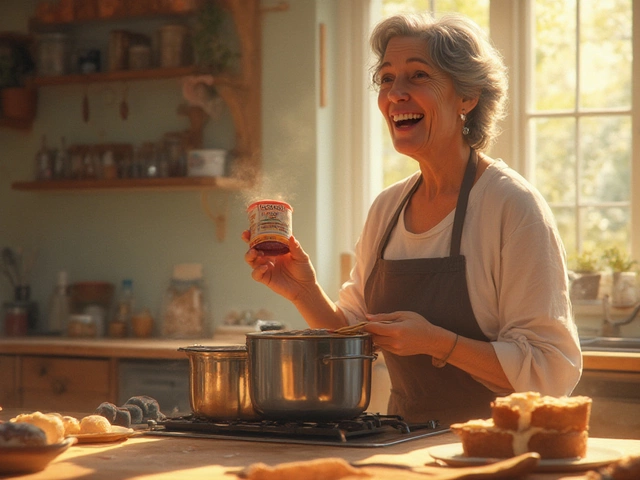

Write a comment